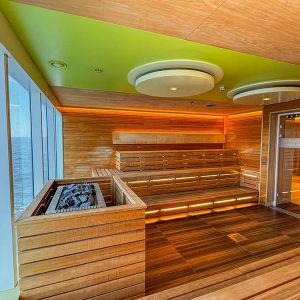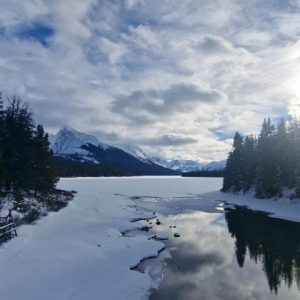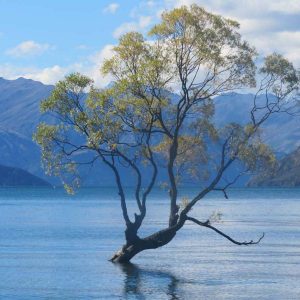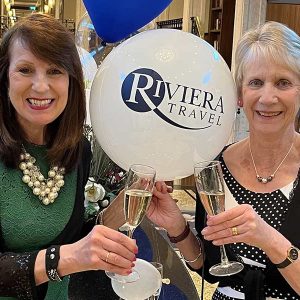From the Andean Peaks to the Caribbean, I discovered the new Colombia rising into a peaceful world. Pristine mountains held us spellbound while vibrant cities greeted us with colour and culture. Festivals? Wow, it was carnival time on our last day…
Bogota
At 2640 metres, Bogota is the world’s third highest capital. Take time to acclimatise for a couple of days.
Capital Highlights
Candelaria is the true heart of town, its gleaming palaces and colonial lanes full of flowers, churches, theatres and museums (Gold, Art and more). Emerald and ethnic craft tempt you on every corner but all ‘calle’ lead to Plaza de Bolivar, the Venezuelan leader who defeated the Spanish conquistadors. Framed by historic buildings, including the cathedral, this is the main square for parades and festivals. There was music everywhere but I fell in love with a woolly llama carrying Colombian hats, just what I needed in the afternoon heat.


Yet most enticing was the funicular ride up to Monserrate where at over 3000 metres pilgrims and tourists climb the final steps to the auspicious white church. The views are spectacular, from the lush mountains all around to the city far below. On a busy day, buy a fast track ticket to beat the queues.
Top Trip from Bogota
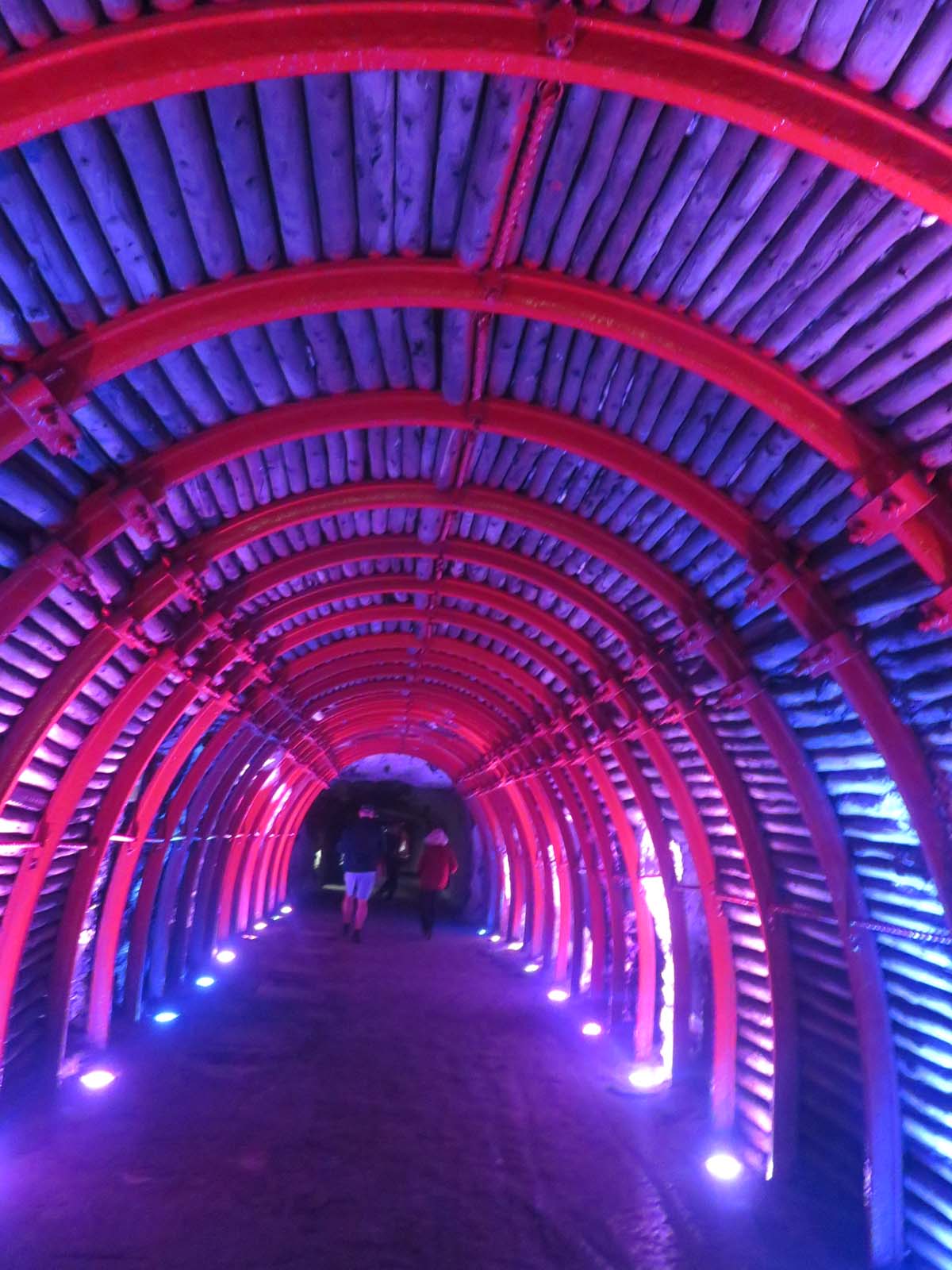
A fair drive from the capital, the original Salt Cathedral was carved by miners to honour their patron saint, Lady of the Rosary. Fourteen stations of the Cross, two levels, three naves and a dome, you are dazzled by ever changing lights and whatever your beliefs, it is a deeply spiritual place. Salt is still extracted in the area, used to buy gold for the gods in ancient times.
We continued across the mountains to the Fossil Museum where the ‘bus-sized’ remains of a marine reptile (kronosaurus). sent shivers down my spine. It is the most complete of its kind in the world. Overnight was in nearby Villa de Leyva, a mountain village where cobbles and white buildings lead to the largest square in Colombia.
Humming Birds and Colombian Coffee
Zona Cafetera
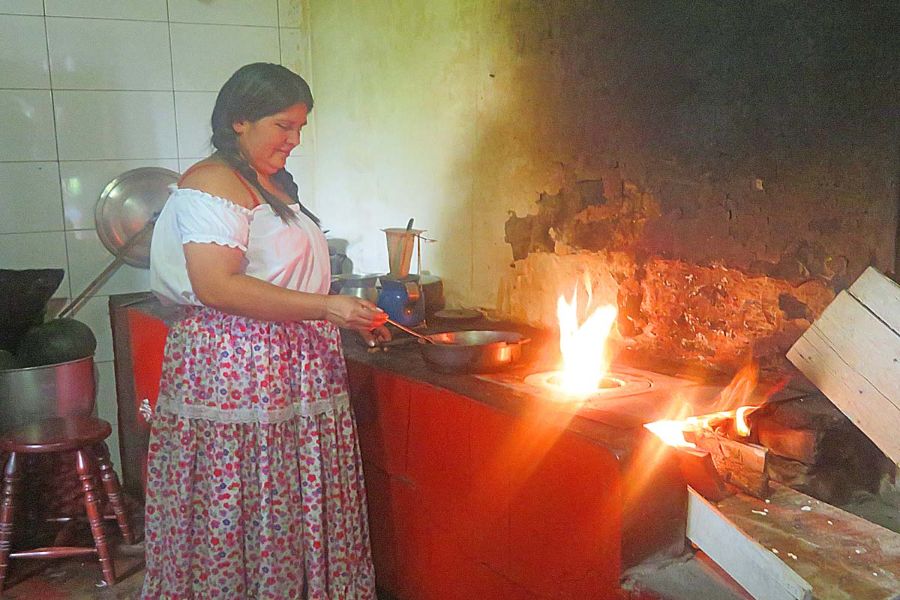
Short flight west to Pereira and there we were, in appropriate gear, picking red coffee beans in the steep plantations. We learned about the process, hand roasting and more, and on the scenic hilltop, we tasted ‘the best coffee in the world’.
‘High mountains, green hills, tropical climate, perfect for coffee?’
We agreed and after a delicious lunch -potato soup (three types}, empanadas and avocado- each of us planted a bean for the future. White clouds drifted on the verdant slopes and the lonely haciendas glistened like a dream.
Cocora Valley
Also in the Central Cordillera we headed to the green Cocora Valley, the ‘star of water’. Energised with ginger, we trekked up to the viewpoint, marvelling at the lofty wax palms, Colombia’s national tree and world’s highest palms which can rise up to 80 metres.
Humming birds flitted around, among myriad other birds, butterflies and plants and flowers, orchids my favourites. Colombia claims the biggest biodiversity anywhere in the world.
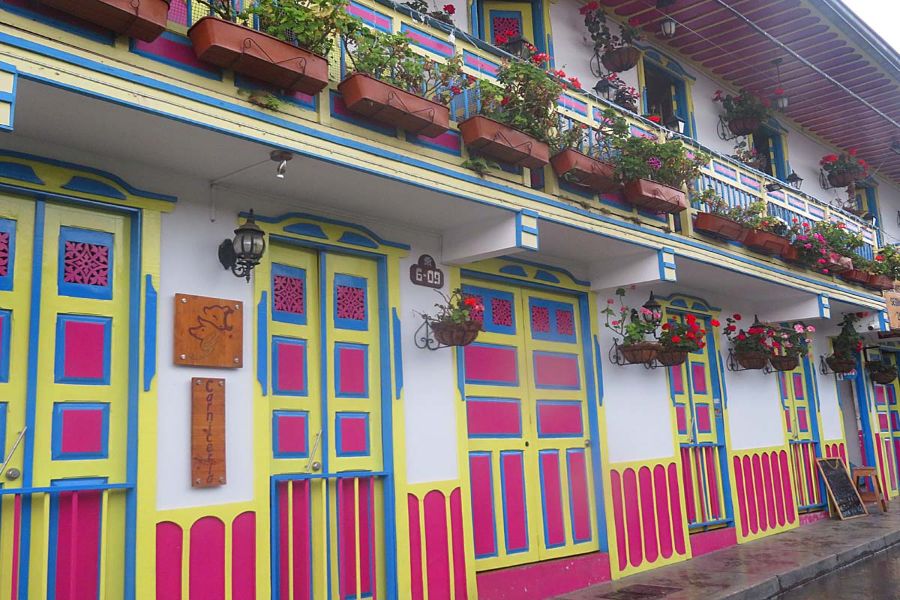
Thunder, tropical rain? A touch of panic as we rushed down the slope, before driving to the pretty village of Salento… and guess what? A rainbow appeared, ever so briefly, above flower-draped balconies and coffee and craft shops.
Dazzling Medellin
Comuna 13
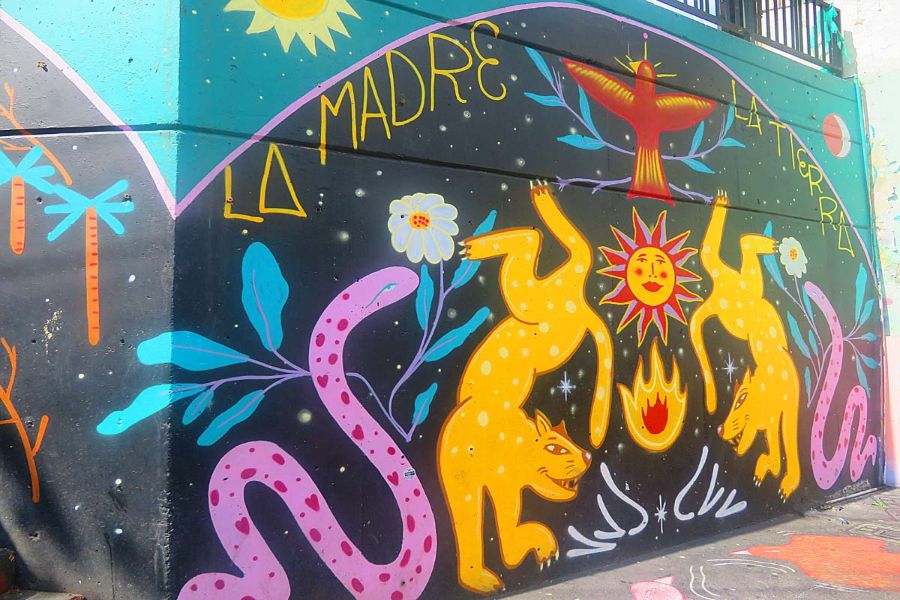
Once the city’s most dangerous district, this is the new face of Colombia where amazing murals brighten up the old houses, clambering up multi-coloured steps and cobbled lanes. Legends, gods, natural world, women and more, local artists now celebrate their ancient culture.
No traffic around except delivery motorbikes but every tiny space is lined with genuine souvenirs alongside drinks and snacks, good trade for the community. Add breakdancing and pulsating music, this is the soul of Medellin.
Back to town? Down the winding slopes or six escalators then local transport, efficient and cheap, maybe to Botero Square to see the famous sculptures or you could try the public cable car for superb views of mountains and city.
Piedra del Penol
Two hours or so from Medellin, Penol was my long anticipated highlight, a massive granite rock rising like a bullet, 200 metres above the land.
Could I make it to the top? 740 steps, tightened like a corset up a vertical crack. ‘If you’re fit, you can,’ said the guide, ‘but there’s no turning back beyond the half-way shrine.’ Awesome but my mind was made up.
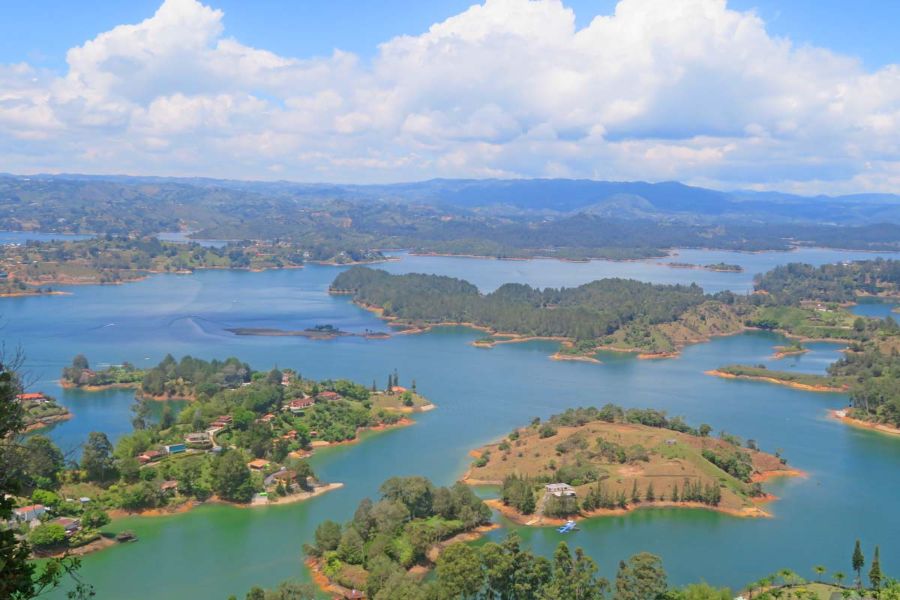
And what a view it was right at the top…green hills and meadows, villages and a beautiful meandering reservoir for clean energy and water sports.
Later we cruised past islands and luxury villas nestling in the trees and boats enjoying the fresh air. It would take a whole week to sail around. Before our flight to Cartagena, we relaxed in the lakeside resort of Guatapé, laced in bright alleyways and garlanded tuktuks.
Caribbean Wonders
Cartagena
High-rise, gleaming white above lagunas, harbour, bridges and boats, this was another world and on La Popa, the old hilltop convent, the view took our breath away. But where was the Colombia we knew?
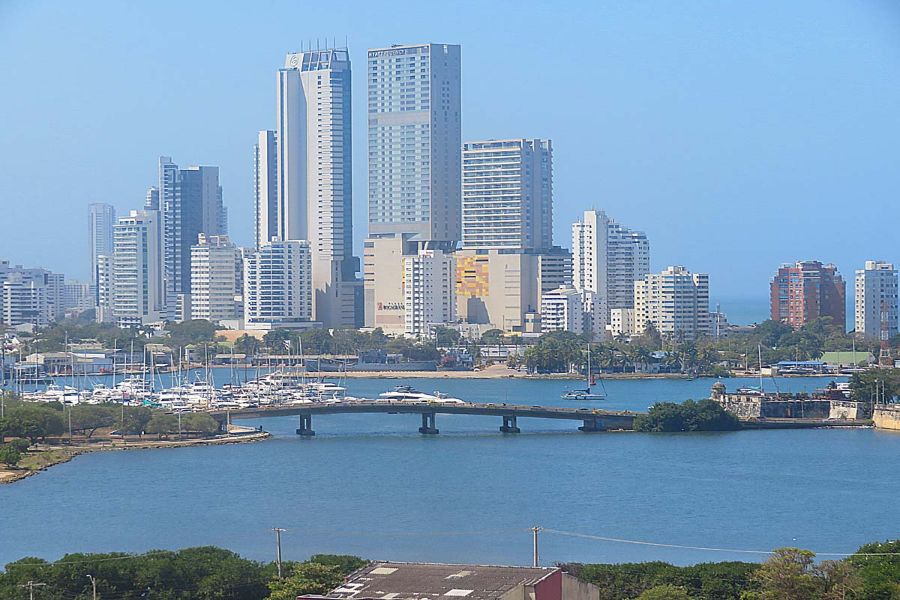
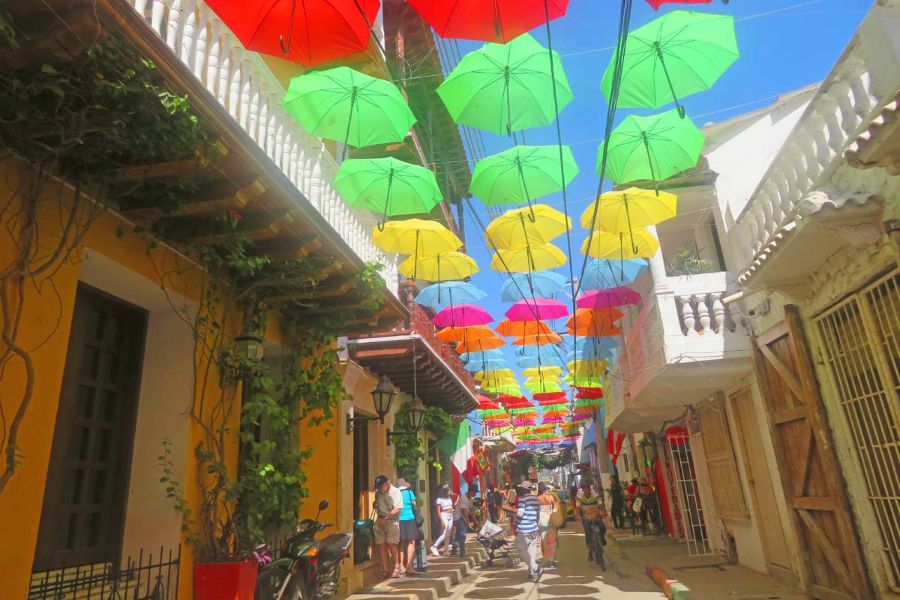
Well, beyond the 16th fortress, and the leafy squares home to iguanas and ti-ti monkeys, the old town beckoned in a colourful maze of colonial buildings. Women in traditional dress balanced bowls of fruit on their heads while horse-drawn carriages rattled on the cobbles. There were museums and galleries and souvenir shops tucked under the arcades.
Later we walked on the ramparts (11 km with bastions and fortifications), a place to see the sunset and dream of Caribbean beaches on the nearby islands. Meanwhile the sea crashed along the shore and soon the rhythm of a salsa dance rose in the warm evening air.
Carnival in Barranquilla
Salsa was alive and well the next day and after a couple of hours up the northern coast, I could not wait to join in. It was carnival time and crowds had come from afar to watch and have fun before Lent. There were flashy shirts and painted faces, food stalls, fun foam and music to keep you on your feet for hours on end.
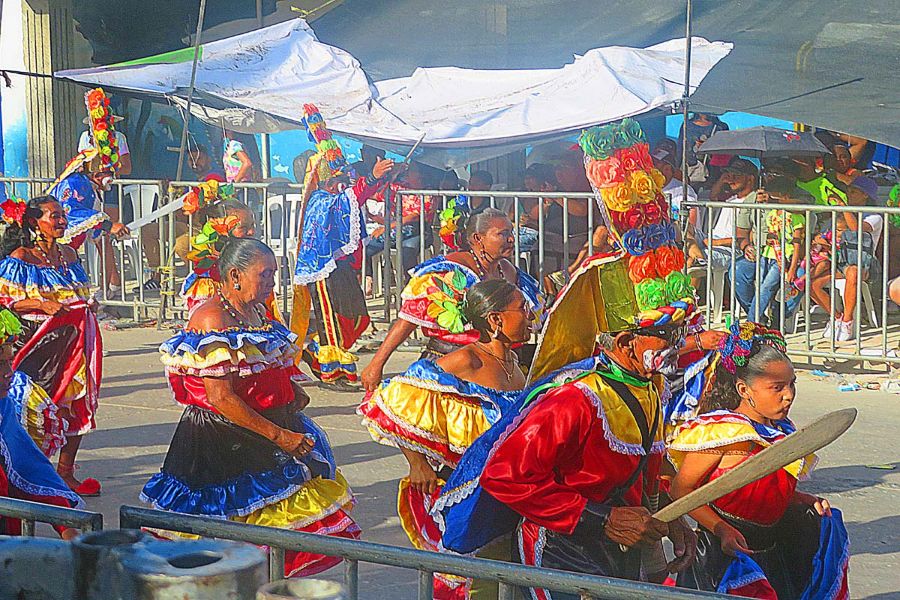
Then the parade arrived, an explosion of colour and joy as folk groups waved and danced right through the town. Sweeping costumes, hats, feathers, jaguar masks and more, Colombia was celebrating its own heritage from indigenous tribes to African slaves and European settlers.
Listed by UNESCO as ‘intangible cultural heritage’, this was the most authentic experience we enjoyed with the locals, so fun-loving and warm.
Colombia on my first trip? Beyond expectation, rich diversity in landscapes and cultures and a colourful land where so much has been done to secure the peace. A fast upcoming destination for discerning travellers.
Next Steps
Solange Hando travelled with Jules Verne on a 12-night escorted tour of Colombia (Search for El Dorado). Find out more and book through our Silver Travel Advisors on 0800 412 5678.

